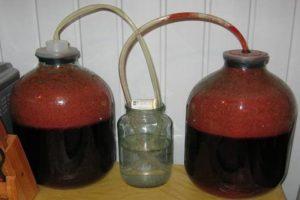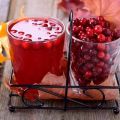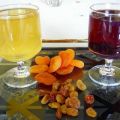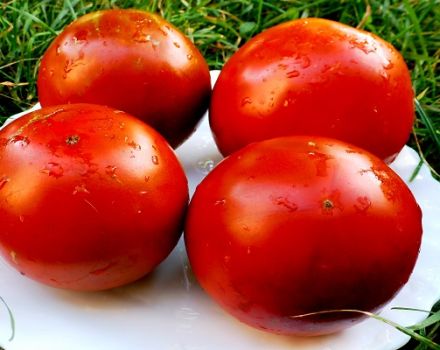The best recipe for making wild grape wine at home
This intoxicating drink can be prepared from all kinds of fruits, berries and their combinations. An especially interesting option would be to make wine from the fruits of wild, Far Eastern grapes. It grows in the northern regions and the Far East, and its berries contain the necessary levels of acids, sugar and natural yeast to make excellent homemade wine.
The specifics of making wine from Amur grapes
It also has the names Ussuriysk and Far Eastern. This wild species is a very valuable specimen among taiga plants in many respects. Its juicy fruits contain many vitamins and biologically active substances, according to this indicator, it is ahead of many berry crops. The berries of the Far Eastern grapes are large (on average 1.5-2 centimeters in diameter), round, with a dense skin.
Fruits are dark blue to black with sheen. The variety has good vigor and productivity. The berries have a high acid content, so they are mainly used only as a wine variety. In addition, grapes have enough sugar and a high level of natural (natural) yeast. This ensures good fermentation of the wort, but it is important not to wash the berries before cooking.
The wine is obtained with an excellent aroma and a spicy, exquisite sourness in taste.

Benefit and harm
Homemade wine (if used wisely) has a beneficial effect on the human body. It increases appetite, improves blood formation, increases the level of red blood cells, strengthens the general immunity of a person. The warmed drink helps in the fight against colds, serves as a means for the prevention of heart attacks and strokes.
Wine also helps fight obesity and prevents kidney stones.
But homemade wine can be harmful to the body. First of all, this drink has a high calorie content, it can also cause allergies and asthma attacks in asthmatics. When consumed excessively, it can damage the cardiovascular system, brain, kidneys and liver and increase blood pressure.

How to make wine from Far Eastern grapes
To make a drink at home, first of all, you need to decide where the wort will ferment, as well as in which container the finished wine will be stored. For this, the following types of containers are suitable:
- glass bottles and bottles, preferably made of dark glass;
- barrels, barrels, tubs made of oak and alder wood;
- stainless steel tanks;
- cans and barrels of high-quality organic polymers (preferably for short-term storage).
The process of making wine begins with grinding the grapes and then crushing them to obtain juice. They use different methods, such as:
- crushing berries in a basin, pan using improvised means, such as a wooden crush;
- manual (mechanical) crushers;
- manual crush (for small volumes);
- automatic crushers (for large volumes of raw materials);
- manual or automatic press.
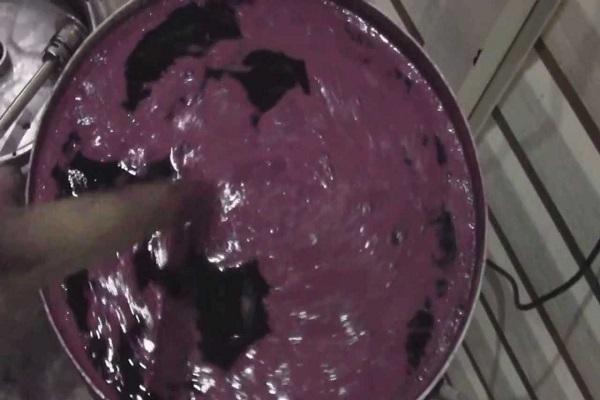
Before preparation, a novice winemaker must choose a recipe that suits his taste preferences. It is important to take into account that the Ussuri grapes have a pronounced acidity. Then the berries are sorted out, discarding all overripe, crushed, rotten and spoiled, leaving only ripe, high-quality fruits. In no case should you wash the selected raw materials - this will negatively affect its fermentation.
Now the berries need to be kneaded well, and then the prepared mass is placed in a warm room (with a temperature of at least + 18 C degrees) for 2-3 days. When fermentation begins - the berries are covered with a white bloom, and the workpiece acquires a sour smell, you need to separate the juice from the pulp. To do this, use a press or simple gauze. Pour sugar into the squeezed juice and stir thoroughly until completely dissolved.
Then it is poured into a container for subsequent fermentation, a water seal is installed and again placed in a warm place for a month. When the wine becomes clear, gas evolution stops, and a sediment appears at the bottom of the container, the wine needs to be filtered.

After the workpiece is poured into glass bottles and sent to a cool basement for a couple of months. There, the drink will gain taste and aroma. At the end of this period, filtration is carried out again and poured into a clean container, clogged with lids or stoppers. Now the wine is completely ready for consumption or further storage.
Fortification of young wine
To increase the degree, attaching young wine to it, add alcohol, moonshine or vodka. For example, to increase the strength of a drink by 1 degree, you need to add 1% alcohol or 2% vodka from the volume of wine to it. After adding, the drink is left to infuse for several weeks.
If a sediment appears, it is drained, and the drink is sent for permanent storage.
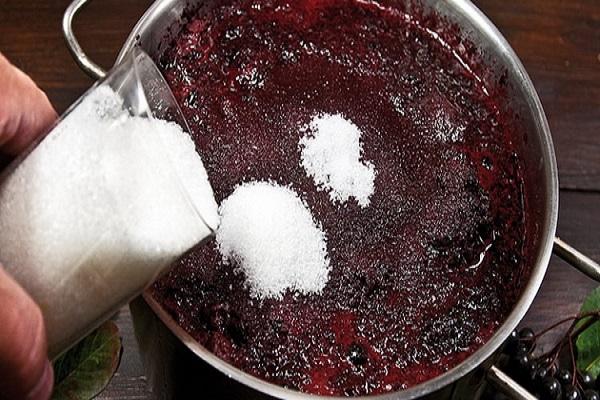
Terms and conditions of storage
Homemade wine is stored in dry, cool places without sudden temperature changes, an optimal range of + 10 C to + 16 C degrees is allowed.
Bottles should be at rest, they should not be moved before immediate use. The moisture level for proper storage is 60-70%.
